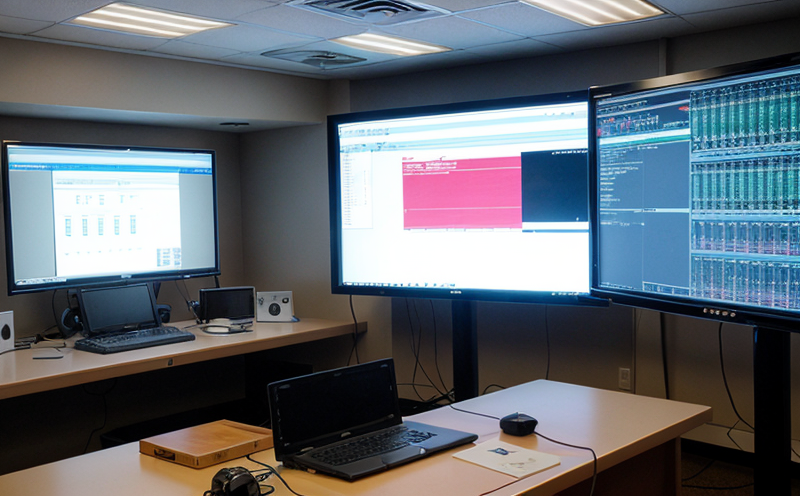EN 50126 RAMS (Reliability, Availability, Maintainability, Safety) Testing of Signaling Systems
The EN 50126 standard is a European Union harmonized standard that sets out the requirements for Reliability, Availability, Maintainability, and Safety in railway signaling systems. This standard ensures that the systems are capable of operating safely and reliably under all conditions, which is critical given the high stakes involved in railway operations.
Reliability refers to the ability of a system to perform its intended function over time without failure. Availability measures how much time the system can operate correctly during any specific period. Maintainability assesses whether a system can be restored to an operable state within a specified timeframe after it has failed or undergone maintenance. Safety ensures that all components interact in such a way that accidents and malfunctions are minimized.
The testing process for EN 50126 involves several stages including the definition of the system, hazard analysis, fault tree analysis, and detailed design reviews. Each stage is critical to ensuring compliance with the standard's stringent requirements.
Testing Parameters:
- Environmental stress testing to simulate real-world conditions such as temperature extremes, humidity, and vibration.
- Load testing to determine how well the system performs under high loads or heavy traffic demands.
- Prediction of failures using probabilistic models based on historical data and current operational conditions.
- Simulation of maintenance activities to evaluate how efficiently they can be performed without compromising safety.
Instrumentation:
- Automated test equipment capable of simulating various fault scenarios in the signaling system.
- High-precision sensors for monitoring environmental factors like temperature and humidity.
- Data acquisition systems to collect and analyze performance metrics over extended periods.
The testing process not only ensures that individual components meet their own reliability standards but also integrates these tests into a comprehensive evaluation of the entire signaling network. This holistic approach helps identify potential weaknesses or areas for improvement before they become critical issues in real-world operations.
Preparation:
- Conduct thorough reviews and updates to existing documentation based on current best practices and industry standards.
- Perform initial assessments of the system's design, materials selection, and manufacturing processes to ensure they align with EN 50126 criteria.
- Prepare detailed test plans outlining specific procedures for each aspect of the testing process.
Reporting:
- A comprehensive report summarizing all aspects of the RAMS evaluation, including findings and recommendations for improvement.
- Detailed documentation supporting any deviations from standard requirements along with justifications provided by the responsible parties.
- Recommendations on necessary modifications to enhance overall system performance according to EN 50126 guidelines.
The importance of EN 50126 RAMS testing cannot be overstated, especially considering its role in ensuring public safety and reducing risks associated with railway operations. By adhering strictly to these standards during the development phase, manufacturers can significantly reduce the likelihood of failures that could lead to accidents or disruptions.
Why It Matters
The significance of EN 50126 RAMS testing cannot be overstated. Given the life-threatening nature of railway transportation, any failure in signaling systems could result in catastrophic consequences. Ensuring that these systems are reliable, available, maintainable, and safe is paramount to maintaining public confidence and trust.
Reliability ensures that the system consistently performs its intended functions without interruption or degradation over time. Availability guarantees that there will be minimal downtime during critical periods when the system needs to be operational. Maintainability allows for quick repairs and regular maintenance checks ensuring continuous performance levels are maintained at optimal standards. Safety focuses on preventing accidents by identifying potential hazards early enough so corrective actions can be taken before they escalate into major problems.
In essence, EN 50126 RAMS testing helps to minimize risks associated with railway signaling systems while enhancing overall operational efficiency and reducing costs related to maintenance and repairs.
Competitive Advantage and Market Impact
Adhering to EN 50126 RAMS testing provides significant competitive advantages in the railway signaling market. It demonstrates a commitment to quality, safety, and reliability which are key factors that influence customer decisions.
- Innovation: By staying ahead of regulatory changes and incorporating advanced technologies into product designs, companies can differentiate themselves from competitors.
- Customer Satisfaction: Meeting or exceeding expectations regarding safety and performance enhances customer satisfaction leading to repeat business opportunities.
- Better Reputation: A strong reputation for producing high-quality products fosters long-term relationships with clients and stakeholders alike.
In addition, compliance with EN 50126 standards can open up new markets by meeting regulatory requirements in different countries. This expands the potential customer base significantly thereby increasing revenue streams.
Use Cases and Application Examples
| Use Case | Description |
|---|---|
| Environmental Stress Testing | This involves subjecting the signaling system to various environmental conditions such as extreme temperatures, humidity levels, and vibrations. This helps in understanding how well the system withstands these stresses without failure. |
| Loading Capacity Tests | The loading capacity tests aim at evaluating the performance of the system under peak traffic loads ensuring it functions correctly even during busy periods. |
| Failure Prediction Using Probabilistic Models | This technique uses historical data and current operating conditions to predict likely failures allowing timely interventions preventing major disruptions. |
| Use Case | Description |
|---|---|
| Maintenance Simulation | Simulating actual maintenance activities helps to assess whether the system can be restored quickly and efficiently without compromising safety. |
| Integration Testing | This ensures that all components of the signaling system work together seamlessly under various scenarios ensuring smooth overall performance. |
| Compliance Verification | Verifying compliance with EN 50126 standards helps to ensure that the product meets all necessary regulatory requirements making it easier to enter new markets. |





